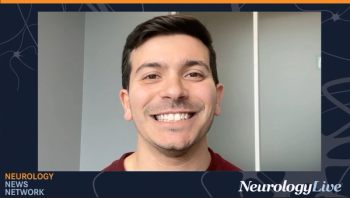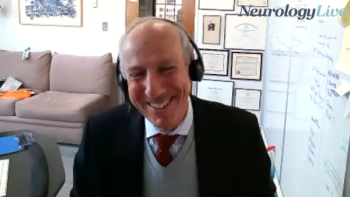
Interim ROSSINI Data Highlight Foslevodopa/Foscarbidopa’s Impact in Advanced Parkinson Disease
Key Takeaways
- Foslevodopa/foscarbidopa (LDp/CDp) significantly reduces OFF time, dyskinesia, and other symptoms in advanced Parkinson disease over 6 months.
- The ROSSINI study employs mixed-effects models to assess LDp/CDp's efficacy and safety, confirming its acceptable safety profile in clinical practice.
New real-world data presented at MDS 2025 demonstrated that foslevodopa/foscarbidopa reduced motor fluctuations and improved quality of life in patients with advanced Parkinson disease over 6 months.
Late-breaking data from cohort A of the ongoing observational ROSSINI study (NCT06107426), presented at the
In cohort A (n = 105), using a data cutoff of April 24, 2025, patients treated with LDp/CDp experienced statistically significant 6-month reductions in OFF time (-2.7 hours), dyskinesia time (-1.7 hours), Movement Disorders Society Unified PD Rating Scale part III (-5.3), PD Sleep Scale (-6.0), King's PD Pain Scale (-8.5), and 39-item PD Questionnaire (-5.3) from baseline to 6 months. Notably, measures of freezing of gait and gastrointestinal dysfunction also showed significant improvement over the 6-month period.
ROSSINI is an ongoing 3-year multicountry, prospective, observational, 2-cohort, open-label study assessing the efficacy and safety of LDp/CDp among adults with advanced idiopathic PD in routine clinical practice. In the study, participants naive to LDp/CDp (cohort A) or transitioning from open-label extension studies of LDp/CDp (NCT04379050/NCT04750226; cohort B) received LDp/CDp in routine clinical practice based on the locally approved label.
The primary end point of ROSSINI was the change from baseline to 36 months in OFF time, a typical standard outcome for PD trials. Mixed-effects models for repeated measurements were utilized for continuous outcomes, and generalized linear mixed-effects models were used for categorical outcomes, both adjusted for country.
Presented by lead author Wolfgang H. Jost, MD, professor of neurology, and chief neurologist at the Parkinson- Klinik Ortenau, in Wolfach, Germany, cohort A participants had a mean age of 68.5 years (SD, 9.5), a mean PD duration of 12.1 years (SD, 5.3), and an average OFF time of 5.2 hours (SE, 0.5) at baseline. Authors noted that the mean daily levodopa-equivalent dose remained stable from baseline to 6 months (1450 mg to 1511 mg). The LDp/CDp base infusion rate increased from 56.1 mg/h at baseline to 66.1 mg/h at 1 month but remained largely stable thereafter (6 months, 67.9 mg/h). Over the 6-month period, 15.2% of patients received LDp/CDp as monotherapy.
Findings from the analysis revealed that the therapy demonstrated an acceptable safety profile in routine clinical practice, with the majority of adverse events (AEs) being nonserious, mild to moderate, and manageable. Overall, 58 patients (55.2%) reported at least 1 AE (55.2%), with hallucinations and injection-site infections each occurring in 6% of patients. Most AEs were mild or moderate, 18 were severe, and 13 were classified as serious. At 6 months, 30 patients discontinued the study (29%), including 9 patients because of AEs (8.6%); hallucination was the only AE reported more than once (n = 2) as the reason for discontinuation.
LDp/CDp became the first and only subcutaneous 24-hour infusion of levodopa-based therapy approved by the FDA for the
In a recent NeurologyLive®
REFERENCES
1. Jost W, Bergquist F, Evans A, et al. Real-world safety and effectiveness of foslevodopa/foscarbidopa in Parkinson’s disease: ROSSINI study 6-month interim results. Presented at: 2025 MDS Congress; October 5-9, 2025; Honolulu, Hawaii. Abstract LBA-15.
2. U.S. FDA Approves Vyalev (foscarbidopa and foslevodopa) for adults living with advanced Parkinson's disease. News release. AbbVie. October 17, 2024. Accessed October 14, 2025. https://news.abbvie.com/2024-10-17-U-S-FDA-Approves-VYALEV-TM-foscarbidopa-and-foslevodopa-for-Adults-Living-with-Advanced-Parkinsons-Disease
Newsletter
Keep your finger on the pulse of neurology—subscribe to NeurologyLive for expert interviews, new data, and breakthrough treatment updates.



































